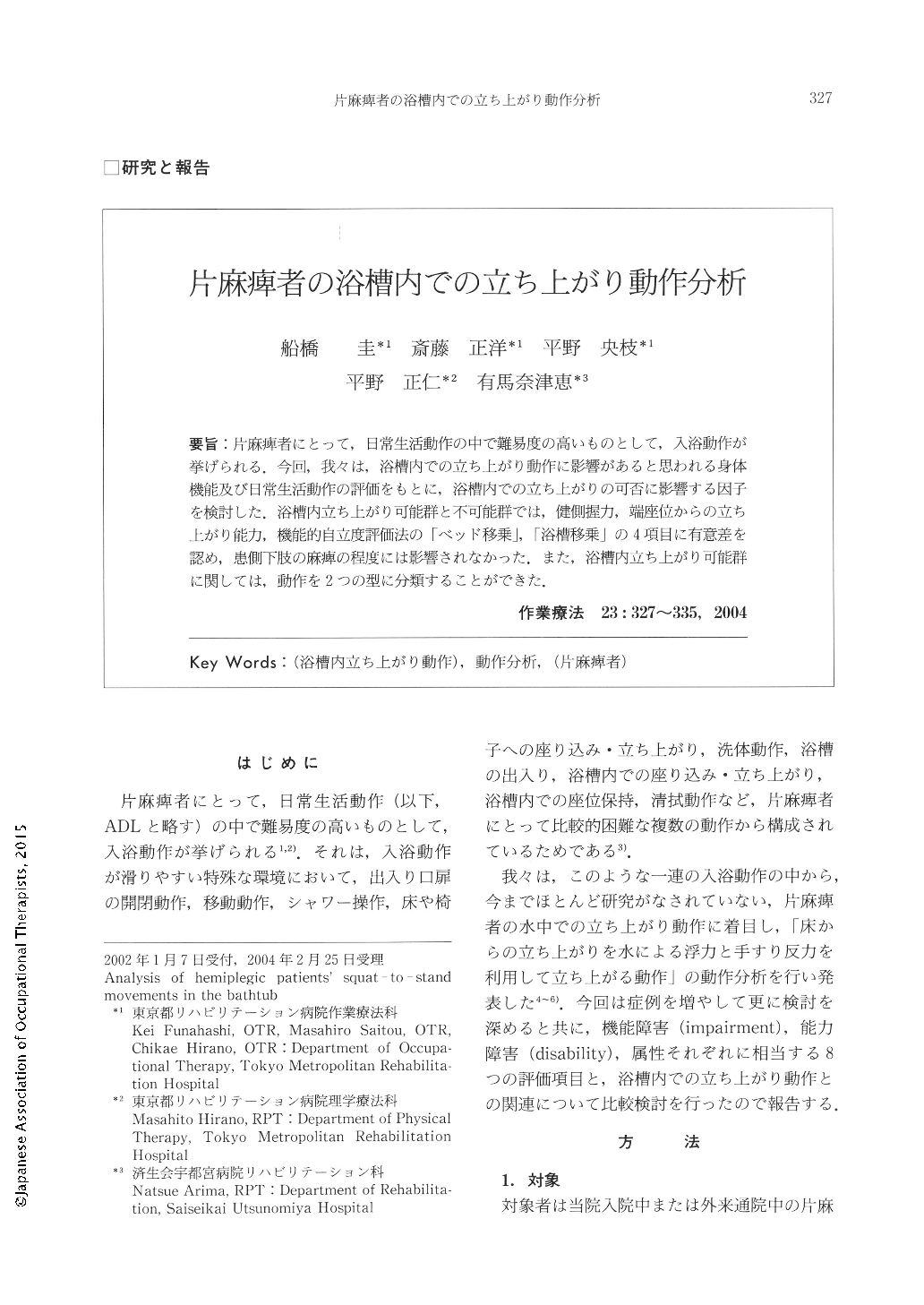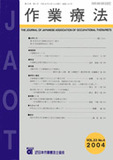Japanese
English
- 販売していません
- Abstract 文献概要
- 1ページ目 Look Inside
- 参考文献 Reference
- サイト内被引用 Cited by
要旨:片麻痺者にとって,日常生活動作の中で難易度の高いものとして,入浴動作が挙げられる.今回,我々は,浴槽内での立ち上がり動作に影響があると思われる身体機能及び日常生活動作の評価をもとに,浴槽内での立ち上がりの可否に影響する因子を検討した.浴槽内立ち上がり可能群と不可能群では,健側握力,端座位からの立ち上がり能力,機能的自立度評価法の「ベッド移乗」,「浴槽移乗」の4項目に有意差を認め,患側下肢の麻痺の程度には影響されなかった.また,浴槽内立ち上がり可能群に関しては,動作を2つの型に分類することができた.
Purpose
For hemiplegic patients, one of the most difficult activities in ADL involves movement in the tub. In this report, we analyzed the movement in the tub focusing on squat-to-stand movements, about which little research has been conducted.
Subjects and Methods
In this study, we included 41 stroke patients : inpatients who were admitted to our hospital, and outpatients who were going to the hospital regularly.
We fashioned a bathtub, with one side transparent, and performed videotape recording from a sagittal plane. The element relevant to the propriety of squat-to-stand movement in the tub was examined based on the evaluation of the body function and physical strength, which is related to movement. With regard to patients who were able to perform squat-to-stand movement in the tub, video operation analysis software was used, and the movement was divided into 5 phases. Then we created a stick picture and analyzed it by employing graphizing displacement. Results and Conclusion
Evident from the research, patients who showed high scores in bed and tub transfers using FIM, and also high scores in grip and sit-to-stand, showed fewer difficulties in squat-to-stand movement in the tub. Thus, it is thought that the function of the less involved side is important when performing squatto-stand in the tub. Also evident from our results, with regard to patients who could stand in the tub, we were able to divide them into two groups with regard to movement. One group was named 'curve' indicating movement of the trochanter major in the locus of the stick picture, which showed the hip joint drawing an arc based on the knee joint in phase 2-4. The other group, 'corner', was named for similar reasons, and showed large forward movement of the knee joint followed by forward-then-up movement in the hip joint in phase 3.
In the follow up study, I want to compare/contrast the two groups more closely and include in my study the position of the handrail suitable for each level of independence, and mitigation of the amount of care.

Copyright © 2004, Japanese Association of Occupational Therapists. All rights reserved.


